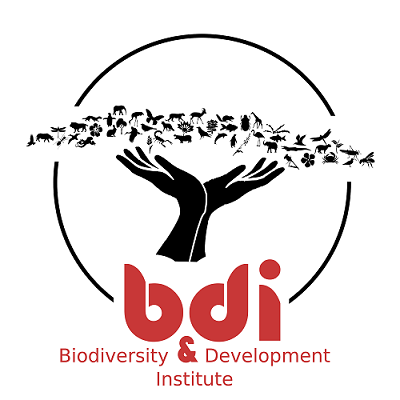PHunting season is here. No critter is safe. Citizen scientists are out and about, armed with their cameras, ready to Photo Hunt!
Well done to each and everyone of you that went out there camera-slinging for biodiversity conservation! The need for up to date species distribution maps is now more critical than ever in light of climate change and global environmental challenges. The future of nature conservation and healthy ecosystems are in our hands. We are all in this together. Citizen science can and does make a major difference for species conservation and to spread awareness of conservation and environmental issues. Engagement with nature is important not just for our well being, but for our very survival.
Round One of PHunting Season kicked off on Saturday, 16 October 2021, and ended on midnight of the following Sunday, 24 October 2021. In total, 78 biomappers were scouring their local parks, gardens, towns and streets for all things crawling, flying, swimming, running, and perching. The amazing total of 2,992 phunting trophies were uploaded to the Virtual Museum. Below is a table summarizing the numbers of records received, by project, in the Virtual Museum for PHunting Round One. The table is organized by most to least amount of records received.
| VM Project | Records |
| BirdPix | 1503 |
| OdonataMAP | 610 |
| LepiMAP | 554 |
| MammalMAP | 97 |
| ReptileMAP | 71 |
| SpiderMAP | 39 |
| PHOWN | 28 |
| OrchidMAP | 24 |
| FrogMAP | 13 |
| MushroomMAP | 10 |
| LacewingMAP | 9 |
| TreeMAP | 9 |
| DungBeetleMAP | 8 |
| FishMAP | 8 |
| EchinoMAP | 5 |
| BOP | 2 |
| ScorpionMAP | 2 |
For BirdPix, the bulk of the records came from South Africa (1182 records), followed by Kenya (176) and Zambia (119). We also received records from Angola, Namibia and Swaziland.
The bird species most recorded? The Pied Crow Corvus albus (26 records) took first place with Egyptian Geese Alopochen aegyptiacus and Cape Sparrows Passer melanurus tied for second place with 24 records each. All in all 370 different bird species were phunted! This number reflects only the records that have been identified by the expert panel thus far, but our experts make quick work of getting identifications verified.

Eight observers submitted more than 100 records on African biodiversity. The Top Ten PHunters for Round One are listed in the table below:
| Observer Name | Total | |
| 1 | Nico Vromant | 301 |
| 2 | Pieter Cronje | 220 |
| 3 | Marius Meiring | 176 |
| 4 | Ryan Tippett | 173 |
| 5 | Lance Robinson | 129 |
| 6 | Zenobia van Dyk | 120 |
| 7 | Karis Daniel | 113 |
| 8 | Andries and Joey de Vries | 109 |
| 9 | Lia Steen | 99 |
| 10 | Kate Braun | 94 |
Well done biomappers! Thank you for being ambassadors for biodiversity.

OdonataMAP, the Atlas of African Dragonflies and Damselflies, received records from Angola, Kenya, Namibia, Nigeria, South Africa, Swaziland and Zambia. From the records that have been identified to date, 86 different species were recorded.
The Broad Scarlet Crocothemis erythraea was most frequently recorded during this first round of phunting with 37 records, followed by Red-veined Dropwing Trithemis arteriosa (32) and Tropical Bluetail Ischnura senegalensis (29). Andries and Joey de Vries were the top OdonataMAPpers, managing to submit 83 records in total for PHunting Round One. Corrie du Toit was close on their heels with 62 records.

LepiMAPpers also made a special effort during this first round of photo hunting, snapping and mapping a total of 554 butterflies and moths. Phunting trophies from all over Africa were uploaded to the LepiMAP section of the Virtual Museum. For South Africa, most of the records came from KwaZulu-Natal Province (83), followed by the Western Cape (68) and Gauteng on 59.
From the 554 records submitted, the expert panel has identified 221 different species thus far! The little African Grass Blue Zizeeria knysna knysna ended up being the most photogenic with 15 records. Next in line were the Black-haired Bush Browns Bicyclus safitza safitza and African Cape Whites Belenois creona severina both with 9 records.

There are many other sections of the Virtual Museum and we encourage you to keep an eye out for these critters too. We are mapping everything from scorpions to frogs to mammals. So what are you waiting for? Grab your camera (or cellphone) and get snapping and mapping!
PHunting Round Two starts on Saturday 13 November 2021 🙂


Is this part of the southern bioblitz? I am in Uganda just slightly north of the equator so do not think I can join .
Hi Elaine, sorry for taking a while to reply 🙂 ….you are most welcome to submit records from Uganda, in fact, please do! We accept records from anywhere in Africa 🙂
I will be going to the Coutadas in Mozambique from the 25 to the 30th November. Very keen to send through some images for the virtual museum. Is there anything in particular I should concentrate on? I will be on a birding trip, but am interested in all biodiversity. Will you be holding a phunt over that period?
Hi Maxine, that is fantastic!! Any and all records welcome, the more the better 🙂 You can upload records to the VM at any time. We will keep an eye out for yours